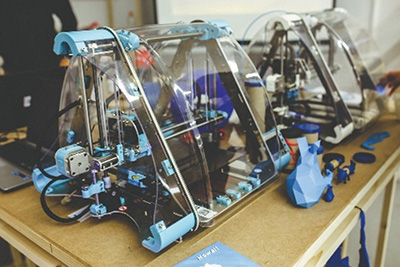Sensing technology to assess quality of components in fields such as aerospace could transform UK industry
05/07/2024
A sensing technology that can assess the quality of components in fields such as aerospace could transform UK industry.
In a recently published study, researchers from the University of Bristol have derived a formula that can inform the design boundaries for a given component’s geometry and material microstructure.
Currently, there is no commercially viable sensing technology and associated imaging algorithm for assessing the quality of such components. If the additive manufacturing (3D printing) of metallic components could satisfy the safety and quality standards required by industries, there could be significant commercial advantages in the manufacturing sector.
The key breakthrough is the use of ultrasonic array sensors. However, these new laser-based versions would not require the sensor to be in contact with the material.
Professor Anthony Mulholland, Author and Head of the School of Engineering Mathematics and Technology, explained: “There is a potential sensing method using a laser-based ultrasonic array and we are using mathematical modelling to inform the design of the equipment ahead of its in-situ deployment.”
The team built a mathematical model that incorporated the physics of ultrasonic waves propagating through a layered (as additively manufactured) metallic material, which took into account the variability that occurs between each manufactured component.
The mathematical formula is made up of the design parameters associated with the ultrasonic laser and the nature of the particular material. The output is a measure of how much information will be produced by the sensor to enable the mechanical integrity of the component to be assessed. The input parameters can then be varied to maximise this information content.
 | ||
| A 3D printer at the University of Bristol |
It is hoped the team’s discovery will accelerate the design and deployment of the proposed solution to this manufacturing opportunity.
Professor Mulholland added: “We can then work with our industry partners to produce a means of assessing the mechanical integrity of these safety-critical components at the manufacturing stage.
“This could then lead to radically new designs (by taking full advantage of 3D printing), quicker and more cost-effective production processes and significant commercial and economic advantage to UK manufacturing.”
Now, the team plans to use the findings to help their experimental collaborators, who are designing and building the laser-based ultrasonic arrays.
These sensors will then be deployed in situ by robotic arms in a controlled additive manufacturing environment. They will maximise the information content in the data produced by the sensor and create bespoke imaging algorithms to generate tomographic images of the interior of components supplied by their industry partners. Destructive means will then be employed to assess the quality of the tomographic images produced.
Professor Mulholland concluded: “Opening up 3D printing in the manufacture of safety-critical components, such as those found in the aerospace industry, would provide significant commercial advantage to UK industry.
“The lack of a means of assessing the mechanical integrity of such components is the major blockage in taking this exciting opportunity forward. This study has built a mathematical model that simulates the use of a new laser-based sensor, which could provide the solution to this problem, and this study will accelerate the sensor’s design and deployment.”